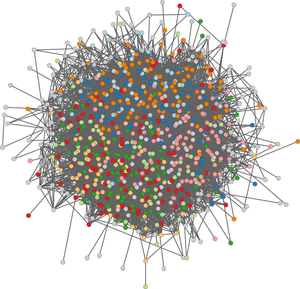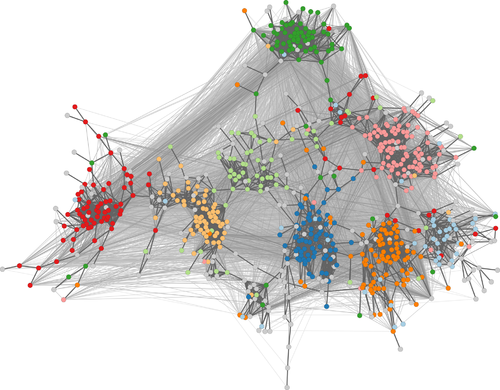Backbone Layout
Jump to navigation
Jump to search
Small-world graphs have characteristically low average distance and thus cause force-directed methods to generate drawings that look like hairballs.
The backbone layout tries to untangle hairball graphs. The method is based on a spanning subgraph that is sparse but connected and consists of strong ties holding together communities.
Strong ties are identified using a measure of embeddedness which is based on a weighted accumulation of triangles in quadrangles.
More detailed background information is provided in
- Arlind Nocaj, Mark Ortmann, and Ulrik Brandes: Untangling Hairballs: From 3 to 14 Degrees of Separation, to appear in Proceedings of the 22nd International Symposium on Graph
Drawing (GD 2014).

